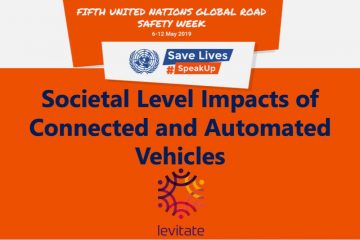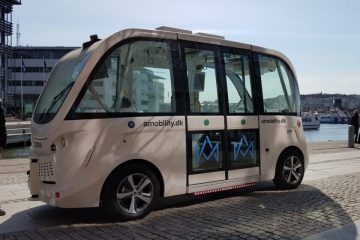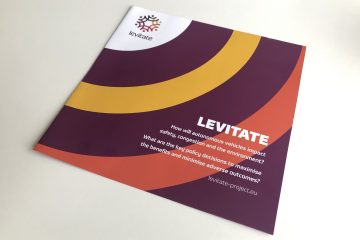Gothenburg is hosting experts from Europe and beyond today to discuss which societal impacts connected and automated vehicles will have. The workshop is organised within the Horizon 2020 funded research project LEVITATE.
The LEVITATE project develops methods to forecast societal level impacts of connected and automated transport (CATs). This includes the impact of CATs on safety, the environment, the economy and society.
To develop tools that meet the needs of future users, 45 experts from Europe and Australia have come to Gothenburg to discuss their visions, expectations, use cases and conflicts for a future with connected automated vehicles.
“Vehicle automation and connected mobility services will have a major impact on transport safety, the environment and prosperity. We have to find the best approaches to ensure future technologies will be beneficial to individuals, society and industry stakeholders”, says Prof. Pete Thomas of Loughborough University and the coordinator of the LEVITATE project.
What regulation will deploy benefits and mitigate the risks?
The impacts of connected and automated transport systems are expected to be disruptional and transformative so conventional approaches to forecast impacts, based on a continuation of existing trends, may not be effective. Authorities in particular face two main challenges: How should they respond to the deployment of connected and automated transport systems (CATS)? And how can they take advantage of these systems to achieve broader policy objectives?
“While automated vehicles may bring some benefits, there is also the possibility that their widespread introduction in urban areas could lead to increased congestion, negative environmental impacts and negative health impacts, if walking and cycling are discouraged”, says Suzanne Hoadley of the European city network Polis.“Therefore, it is of utmost urgency to bring professionals together beyond their own sectors and exchange about use cases and risks of CATs. Today’s workshop in Gothenburg takes an important step on that matter.”
Workshop participants include local, regional and national authorities, agencies, services providers, OEMs, researchers and networks representing user groups such as cities, pedestrians, automotive or road research.
A self-driving minibus with space for 11 passengers is currently being tested in Gothenburg that connects the parking facilities Polstjärnegatan and the workshop venue in Lindholmen Science Park. Participants have the possibility to test the shuttle and take the eight minutes trip.
The LEVITATE Stakeholder group facilitates a continuous and purposeful dialogue with experts, users and the consortium about the impacts of connected and automated transport (CAT). Through the SRG, LEVITATE provides a European platform for knowledge sharing and discussion about automation in transport. The group meets several times until the completion of the project in 2021.
About LEVITATE
Launched in December 2018, LEVITATE is a 3-year project led by Loughborough University whose main output will be a policy support tool (PST) to help local authorities forecast the impacts of automated vehicles over the short, medium and long-term. The PST will also contain a back-casting tool providing guidance to local authorities on the measures to implement to achieve desired outcomes against a backdrop of increasing vehicle automation.







